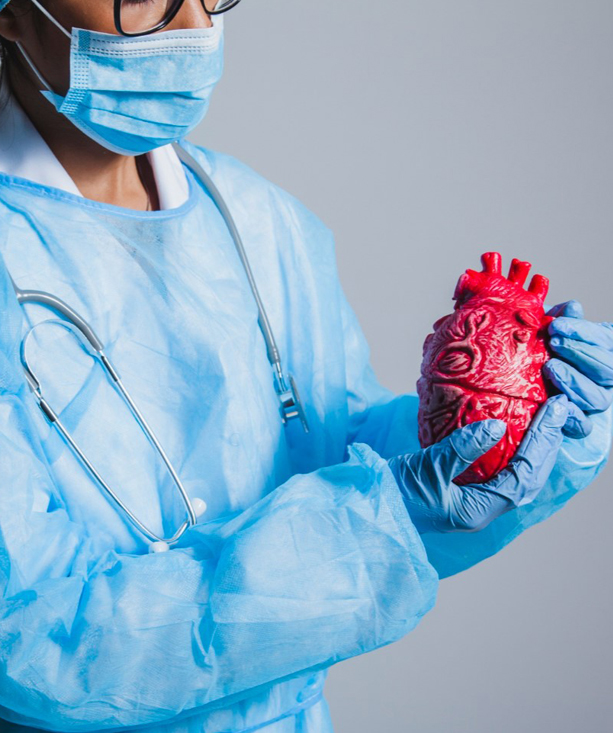Coronary Artery Bypass Surgery (CABG) is performed as both open-heart and MICS. This procedure restores the compromised blood supply to the heart caused due to coronary artery disease (CAD). CAD results in blocked blood supply to the heart causing agonizing chest pain or angina, heart failure and death if left untreated.
Coronary artery bypass graft (CABG) is a form of bypass surgery that can create new routes around narrowed and blocked coronary arteries, permitting increased blood flow to deliver oxygen and nutrients to the heart muscle. Coronary artery bypass graft (CABG) is an option for selected groups of patients with significant narrowing and blockages of the heart arteries. The bypass graft for a CABG can be a vein from the leg or an inner chest-wall artery. CABG surgery is one of the most commonly performed major operations. Coronary artery disease develops because of hardening of the arteries (atherosclerosis) that supplies blood to the heart muscle. Diagnostic tests prior to (and after) CABG include the electrocardiogram (ECG), stress test, echocardiogram (ECHO), and coronary angiography (CAG).
CABG is performed to restore blood flow to the heart. This relieves chest pain and ischemia, improves the patient’s quality of life, and, in some cases, prolongs the patient’s life. The goal of the procedure is to relieve symptoms of coronary artery disease, enable the patient to resume a normal lifestyle, and to lower the risk of a heart attack or other heart problems.
Coronary artery bypass graft surgery may be performed on patients who:
- Have blockages in at least two to three major coronary arteries, especially if the blockages are in arteries that feed the heart’s left ventricle or in the left anterior descending artery
- Have angina so severe that even mild exertion causes chest pain
- Have poor left ventricular function
- Cannot tolerate percutaneous transluminal coronary angioplasty and do not respond well to drug therapy
Minimally Invasive Cardiac Surgery (MICS) as the name suggests, requires minimal (small) incision (opening) on the body to perform the complete surgery. This method has revolutionised performance of cardiac surgeries. MICS has emerged as a successful operation, worldwide, over the past two decades, with innovation in instrumentation and better computer-aided imaging, advancement in digital high-precision cameras, and development in the field of robotics and ergonomic digital instrumentation. In this method, the doctor accesses the heart through few small incisions without cutting any bone, by only splitting the muscle. This is still relatively a new technique in India.
Minimally Invasive Surgery has several advantages such as:
- Smaller incisions
- Smaller scars
- Reduced infection risk
- Shorter recovery time
